Its foot is of circular form surmounted by a grooved column, its top is also in bronze with floral decoration which makes this lamp particular and rare because the most used material at the time is glass.
The pedestal linking the spout and the neck is made of brass and its stamped glass is original.
Period : XIXth - Napoleon III
Dimensions : Total height : 109cm
Height from the foot to the spout : 82cm
Height of the glass : 27cm
From 1853, we see the appearance of an oil finally fluid, the lamp oil.
This light petroleum oil, obtained after distillation of crude oil between 150 and 300 degrees, is intended for lighting.
It is the end of the oil lamp, and the advent of the kerosene lamp.
It produces a brighter and more regular light than oil lamps, even perfected.
This is explained by the fluidity of kerosene, which rises much more easily in the wick than oil, always too viscous.
The kerosene lamp was therefore the normal lighting from the second half of the 19th century until the beginning of the 20th century.
Then the electric lighting spread from 1900, first in the cities, then in the countryside, dethroning the oil lamp.


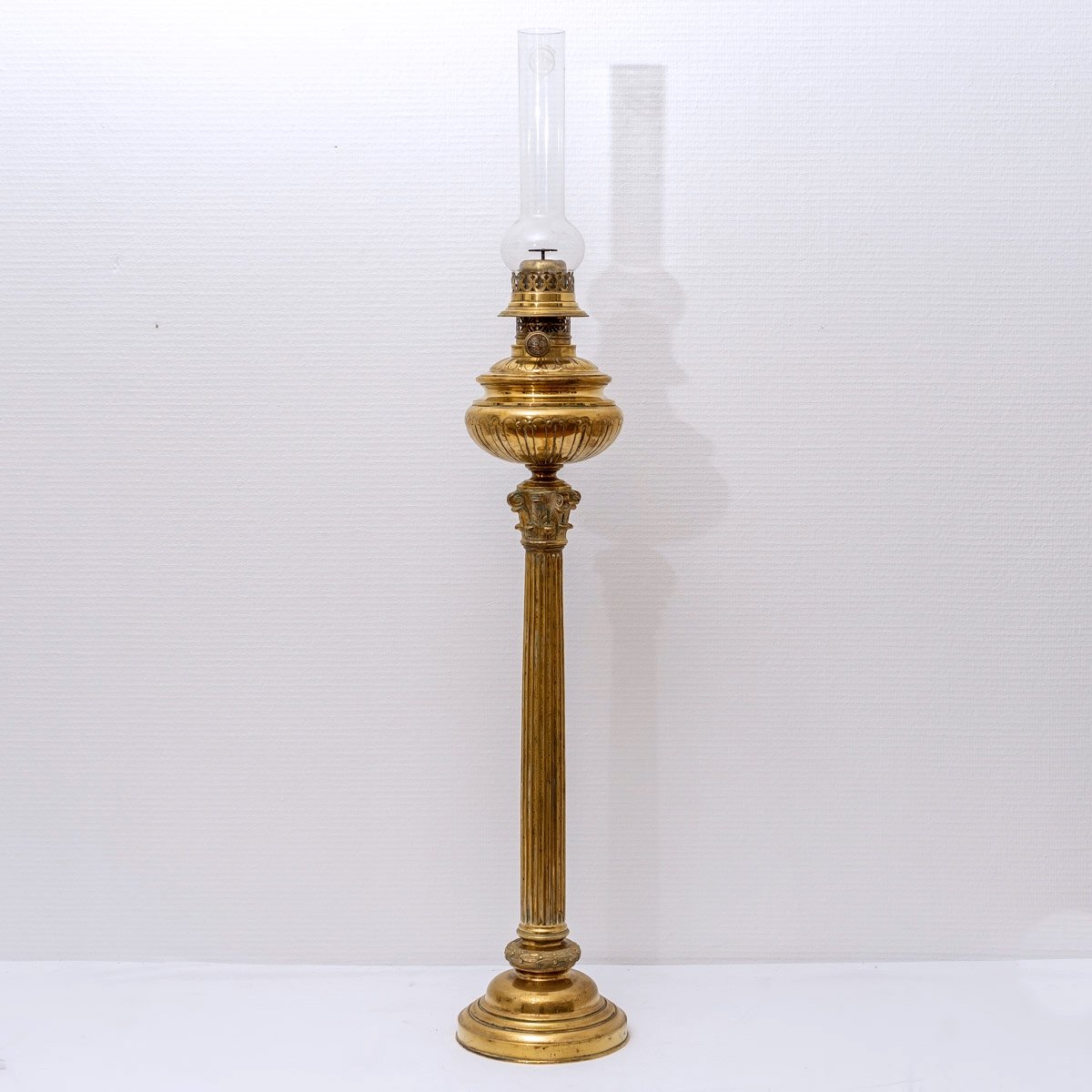
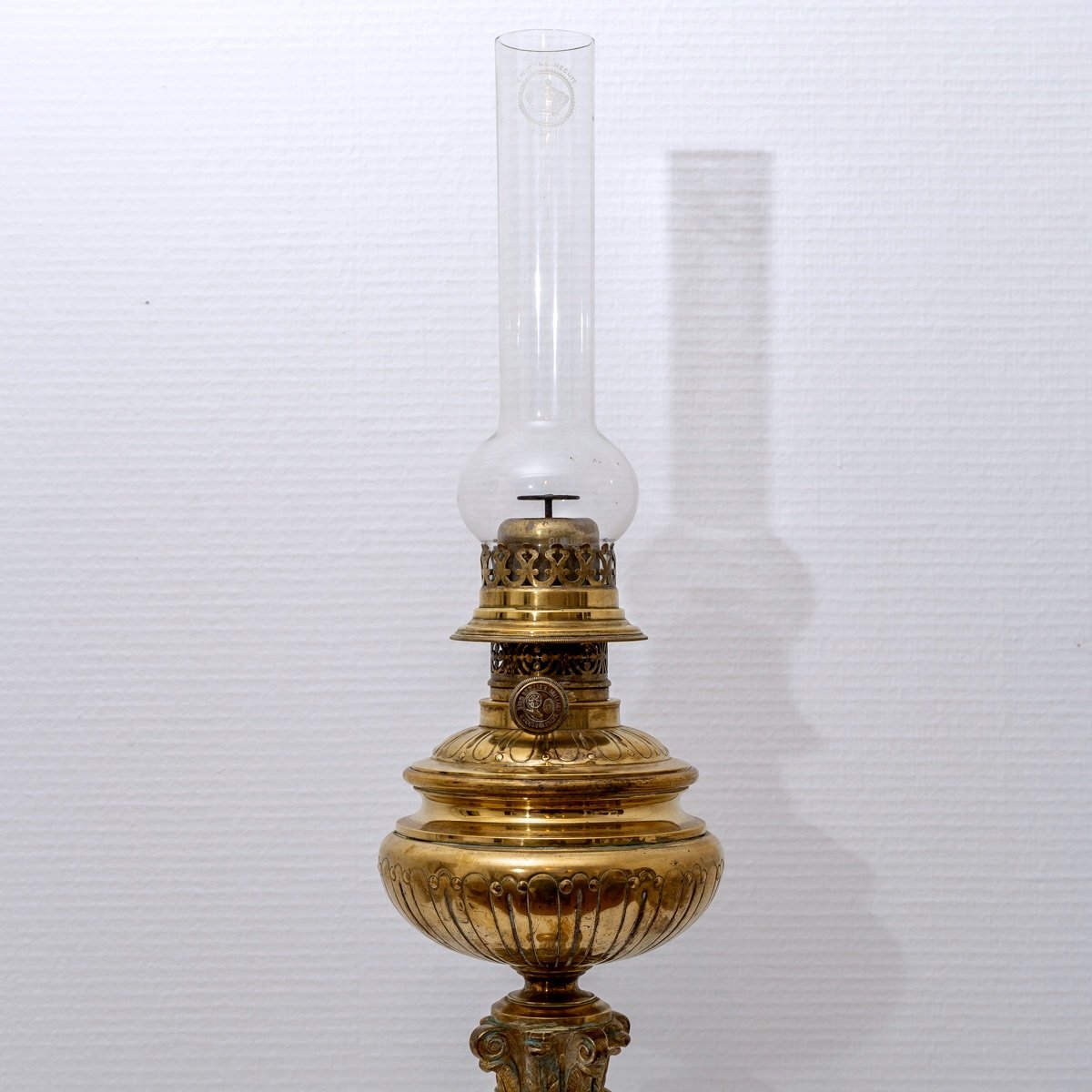













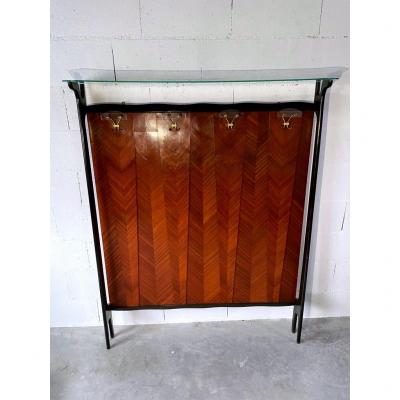
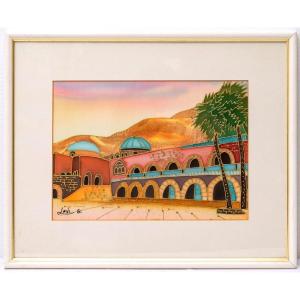





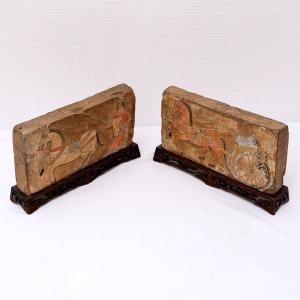




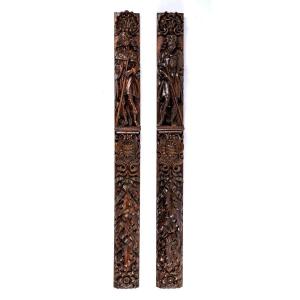
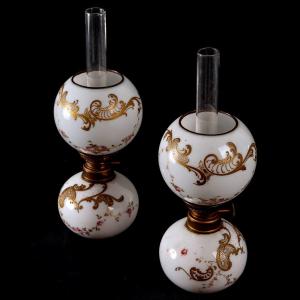
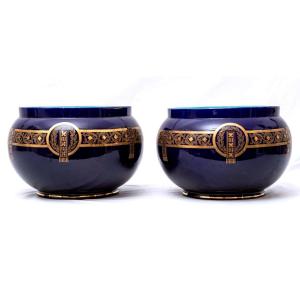
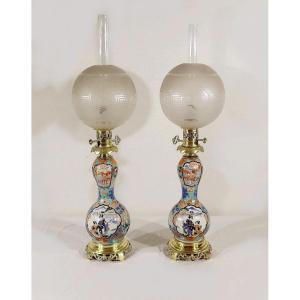
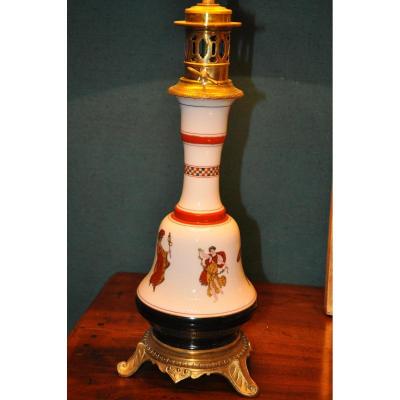
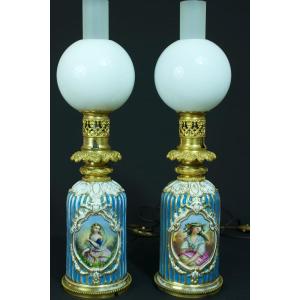

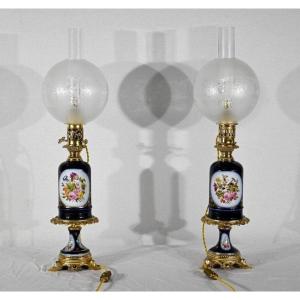



 Le Magazine de PROANTIC
Le Magazine de PROANTIC TRÉSORS Magazine
TRÉSORS Magazine Rivista Artiquariato
Rivista Artiquariato